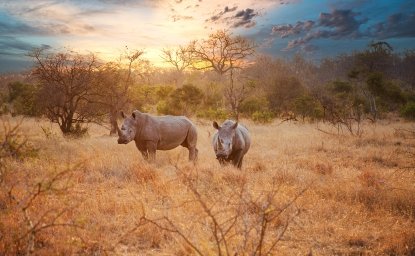
A blog of the Wilson Center

Three in four Venezuelans live in extreme poverty
According to a study by a team of researchers in 2021 76.6% of Venezuelans live on less than $1.90 a day, the international standard for extreme poverty. The report, the Encuesta Nacional de Condiciones de Vida (ENCOVI), has been produced every year since 2014, when extreme poverty was “only” 13.1%. The ENCOVI study estimates that Venezuela’s Gross Domestic Product has shrunk by 74% since 2014, and hyperinflation has been so severe that on October 1, Venezuela announced that it was cutting six zeroes from its currency—the second such overhaul in three years.
In 2015, Maduro suspended official poverty statistics to conceal his government’s terrible mismanagement of the economy, but the flood of people fleeing his cruel fecklessness cannot be hidden. A wave of displacement that began in 2014, has grown to more than 5.4 million Venezuelans displaced according to United Nations estimates, the vast majority of whom are in the neighboring countries of Colombia, Peru and Ecuador. That’s more than 5% of Venezuela’s total population, the second worst refugee crisis in the world after Syria, and the largest mass migration event in the history of the Americas.
Maduro is quick to blame economic sanctions by the United States as the cause of all his woes, including his country’s economic collapse. But Venezuela’s ruin long predates the 2017 enactment of targeted U.S. sanctions, and economists agree that corruption, poor policy and dysfunction on the part of the Maduro regime are responsible. A three-fold increase in oil prices from 2003 to 2014 brought about vast improvements in per capita GDP and poverty rates, but masked underlying weakness and under investment; when oil prices collapsed in the summer of 2014 so too did Venezuelan oil production, and its economy.
Afghanistan is the source of more than 80% of the world’s opium supply, and in recent years, much of that has been in Taliban-controlled areas
When the Taliban seized control of Afghanistan earlier this year, its leadership promised to end opium poppy cultivation across the country. To back up its pledge, the Taliban leadership pointed to the prohibition on opium it imposed two decades ago when it was last in power.
The Taliban will have a long way to go to make good on its commitment. In 2020, Afghan farmers devoted their third-highest-ever acreage to opium production, and the United Nations Office of Drugs and Crime reports that the opium trade has grown to constitute more than 10% of the country’s economy. Much of that growth comes from lands under Taliban control. In fact, in recent years, Taliban leaders have used the opium trade as a major revenue source, imposing an informal tax on farmers, laboratories that converted the crop into heroin, and smugglers who transported the drugs.
Some analysts, like the International Crisis Group’s Ibraheem Bahiss, believe that the Taliban’s pledge on ending the opium trade in Afghanistan is merely a “bargaining chip in return for international aid.” According to the World Bank, prior to the Taliban takeover such aid accounted for 43% of Afghanistan’s GDP.
Two thirds of Russia is permafrost, and it’s thawing
According to Russia's data, since 1976, the country’s average temperature has risen almost a full degree Fahrenheit every decade—two and a half times the global pace. As the Wall Street Journal reports, this has led to unexpected challenges. As Russia’s infrastructure built around permanently frozen ground has begun to shift, building foundations crack, and pipes burst. In 2019, flooding and wildfire disasters prompted Putin’s apparatus to ratify the Paris climate agreement and consider limiting the country’s emissions.
Yet just as Russia’s infrastructure was built on frozen ground, its economy is built on fossil fuels. Russia is the world’s largest net exporter of natural gas, second largest exporter of oil and third of coal. Combined, oil and gas production make up between 15 and 20 percent of the Russian economy, compared to eight percent of the United States economy. Russians remain one of the most skeptical populations in the world of the dangers of climate change, and the country’s economy is one of the most carbon intensive—requiring 5.5 times as much CO2 for each dollar of GDP as does the United States.
Although Russia’s total CO2 emissions are dwarfed by the world’s leading carbon emitter China, it faces a difficult tradeoff as it seeks to curtail its emissions and mitigate the effects of climate change on its cities without hobbling its economy.
Author

Explore More in Stubborn Things
Browse Stubborn Things
Spying on Poachers

China and the Chocolate Factory

India: Economic Growth, Environmental Realities
